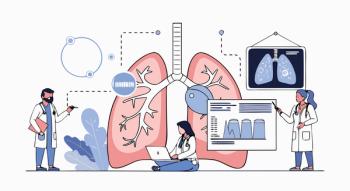
Top tech needs for value-minded executives
Here are the top ways to strengthen health information technology to advance value-based, quality care.
As health information technology (HIT) proliferates at breakneck speed, it still falls short in several areas critical to the realization and advancement of value-based care.
Here are the top opportunities for technology to provide meaningful improvements in patient outcomes and cost of care reduction:
1. More advanced patient-facing HIT.
Sometimes described as information prescribing, more sophisticated HIT tools can identify patient’s information gaps and target information to particular moments in care. These systems can conduct patient outreach to support a pharmaceutical manufacturer’s patient support program or reinforce the provider’s care plan. This self-management content can be customized to a patient’s specific needs and delivered in a way that is understandable, actionable and meaningful.
2. Patient in-home monitoring.
Monitoring patient behavior when it comes to issues such as medication nonadherence, a $100 to $300 billion source of wasted healthcare spending, needs significant improvement.
Most healthcare happens outside the four walls of a clinic or hospital, yet most providers have no mechanism for integrating observations of daily living into the care management process. Most of the useful medication management issues-medication adherence, socioeconomic and lifestyle data-remains just outside the provider’s view. Access to this type of patient information is needed to help providers better engage their patients in their treatment regimens. However this data largely remains locked in silos.
New “patient engagement” apps pop up almost every week. Many are helpful, but a consistent, caring human being is still essential to improving patient compliance to medication regimens and health outcomes. We know this because of the work of our patient care coordinators. These healthcare professionals build trusting relationships with our patients through learning about lifestyle preferences and barriers to adherence, such as side effects and prior authorization challenges, that would go unidentified and unresolved if not for this direct human-to-human intervention. In a
In a separate
3. Better data analytics.
EHRs could be used to capture the data necessary for advanced analytics. An effective automated analytics algorithm could be employed to identify high-risk patients and high risk behaviors. To meet the goals of an outcomes-based contract between pharmaceutical manufacturers and payers for example, providers ideally would be notified when the system detects high-risk behavior that leads to medication noncompliance before the noncompliance actually occurs. Of course all analytics are only valuable if the information they provide is acted upon in a clinically meaningful way in a timely manner.
Patient self-perceived data could be meaningful, relatively easy data to add to risk algorithms. A recent
4. Improvements in communication between EHRs.
Having access to various types of patient information that has been collected at different points in the care continuum can help providers engage patients in their care plan and meet the goals of outcome based contracts. Unfortunately, lack of data standards and lack of cooperation keeps this information locked in isolated data warehouses.
5. Performance measurement.
Who is going to gather all the data from various sources and tie it all together to measure the effectiveness of care, or that same outcomes based contract between a pharmaceutical manufacturer and payer? Ideally all of the providers involved with the delivery of the drug and the patient wrap around services would have access to real time performance measurements and clinical outcomes. Without seamless integration of many disparate systems, this remains a significant challenge.
So what is the solution to all of these technology barriers? Fortunately, at the federal level, we have taken several steps in the right direction toward greatly improving our health information technology infrastructure.
One of the most important steps was announced at the HIMSS conference in Las Vegas earlier this year and is known as the
These commitments are rather broad but at least the Interoperability Pledge gives the major players a common goal and has the potential to align long time adversaries. If we dig a little deeper into these commitments by reviewing the
published by the Office of the National Coordinator for HIT, we discover that the first step in improving technical data standards would be to at least agree on a common clinical data set. I believe this is a key ingredient in outcomes-based contract success. Once we have established the clinical fields that are going to be collected and the providers that will be collecting them, establishing the technical data standards should be a much easier exercise.
Finally, if we review the
, we discover that at the highest levels in this current administration we have true commitment to modernize the U,S, HIT infrastructure so that patients, their providers and their insurers will be able to use it to help achieve health and wellness goals. In fact, the overall vision of the Federal Health IT Strategic Plan looks very much like the goals of an outcomes based contract: Deliver high-quality care at lower costs that results in a healthy engaged population. This commitment will help facilitate and expedite the transformation of data to information, this information to knowledge and this knowledge to informed action that is vital to producing the sustained positive outcomes these contracts aspire to achieve.
Patrick Dunham is cofounder and CEO for
Newsletter
Get the latest industry news, event updates, and more from Managed healthcare Executive.



















































